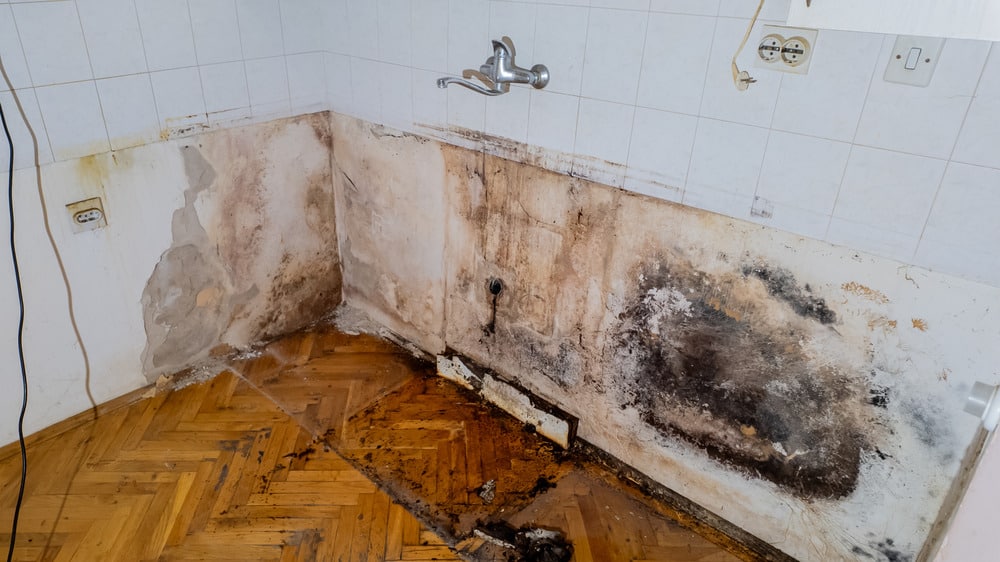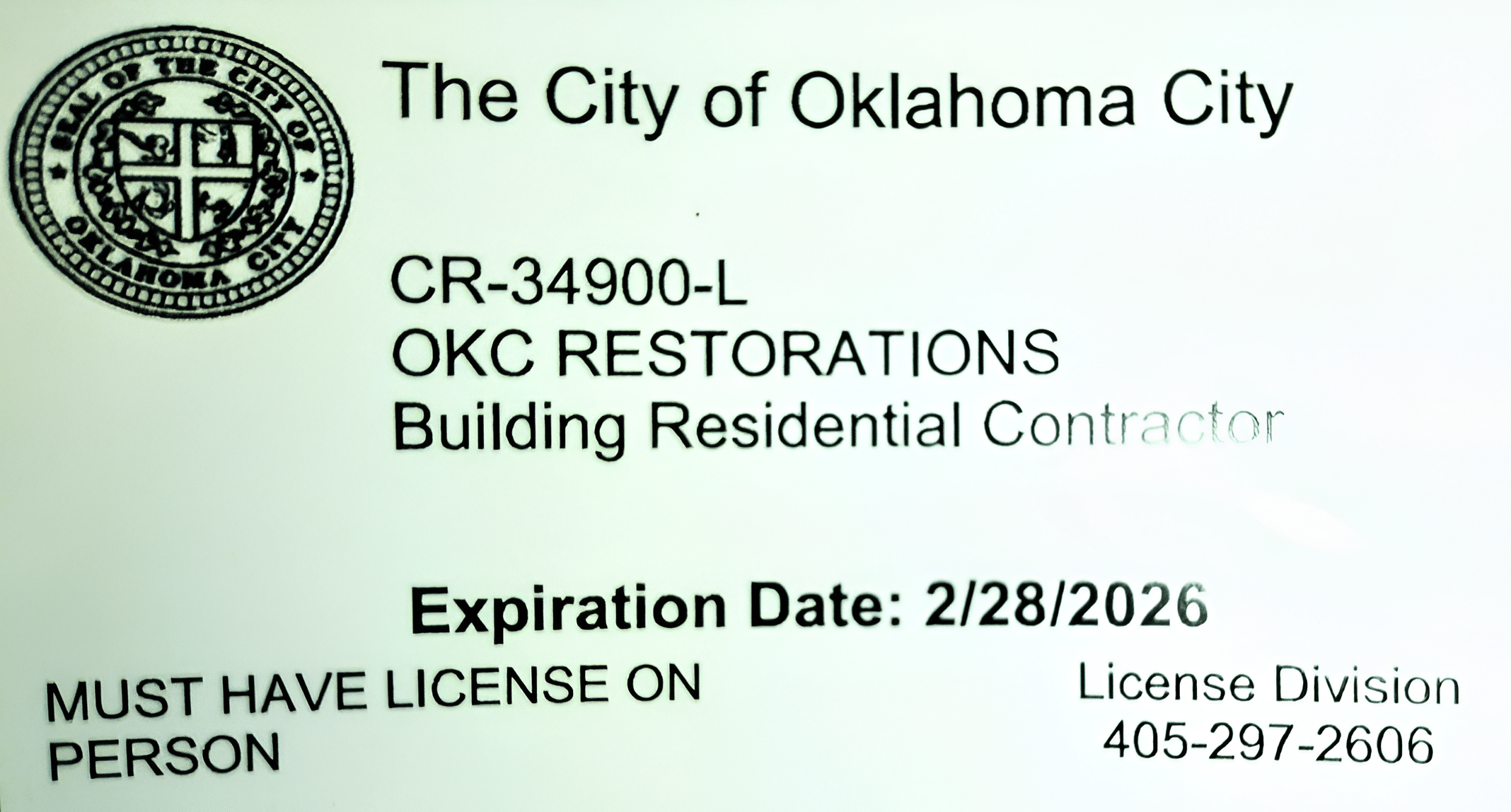
Water has its way of sneaking into the most inconvenient areas of your home, whether it’s seeping through a cracked foundation or pooling under a faulty appliance. What many homeowners don’t realize is that the clock starts ticking the moment water comes into contact with organic material like wood, drywall, or carpet. This article outlines how to treat mold caused by water damage, the types of mold that you might encounter, and the health risks these organisms can pose.
Why Is Mold Likely After Water Damage?
Mold becomes extremely likely after water damage because moisture acts as the primary trigger for spore activation. While mold spores naturally exist everywhere in our environment, they remain dormant until they encounter moist conditions. Water damage provides these spores with the moisture that they need to become active and begin their growth. For instance, burst pipes in your basement or roof leaks during heavy storms create the ideal breeding ground for mold. Within 24 to 48 hours, mold from a water leak can begin to grow and spread throughout vulnerable areas.
How to Find Mold?
Finding mold requires a careful examination of both the obvious areas and hidden places where water might settle. Watch for discolored marks, fuzzy spots, or unusual coloration that didn’t exist before. That damp smell typically signifies mold growth, even if you can’t see it yet. Look for spaces that are humid or have little airflow. Lastly, don’t overlook concealed spaces where water damage may go unnoticed, as mold often grows out of sight.
These are the five major areas where mold commonly grows after water damage:
- Bathrooms: Routine showers and baths create consistent moisture that builds up on bathroom surfaces, so tiles, grout, and ventilation fans are good places for mold spores to establish colonies.
- Basements: Spaces below ground level are susceptible to moisture and have poor ventilation, which allows mold to easily grow on walls, flooring, and items that are stored there.
- Kitchen Areas: Leaks around dishwashers, sinks, and refrigerators create hidden moisture reservoirs under cabinet units and behind appliances where mold can quietly develop for months.
- Attics: Roof leaks and poor ventilation allow water to penetrate the insulation and wood structures, leading to large areas of mold from water damage and building materials that become health hazards.
- Wall Cavities: Water pipes or exterior leaks can soak the interior of the walls and allow mold to grow behind drywall and insulation, where it may not be discovered until it is widespread and costly to remove.
Common Types of Mold Caused by Water Damage
Water problems in homes create breeding grounds for harmful fungi that will quickly spread throughout your living spaces. Different types of mold thrive in damp environments, and each type has different health risks and identification challenges. Below are the main types of mold caused by water damage that residents need to know:
-
Stachybotrys (Black Mold)
Stachybotrys chartarum has a black, slimy appearance and a foul, musty smell that is hard to ignore. This notorious fungus grows on damp cellulose materials like drywall, wood, and paper. Is black mold from water damage dangerous? Like most molds, black mold can cause chronic respiratory problems. Professional removal is necessary since exposure poses health hazards, especially to children and those with pre-existing medical conditions.
-
Aspergillus
This common household mold appears in a variety of colors, including white, yellow, green, or black, with a powdery surface texture. Aspergillus thrives in damp areas like air conditioning systems, food storage areas, and walls with continued exposure to moisture. Most healthy individuals can tolerate limited exposure without developing symptoms, but those with respiratory conditions or weakened immunity may develop respiratory issues. Treatment starts with moisture control and proceeds with the removal of infected materials, followed by cleaning. Professional assessment helps determine the extent of contamination and allows for thorough elimination of mold.
-
Penicillium
Green or blue fuzzy patches characterize this fast-spreading mold growth that quickly infests organic materials in homes and offices. Penicillium can grow on spoiled food, clothing, wallpaper, carpet, and insulation after water damage has occurred. To effectively eradicate Penicillium mold, you must eliminate the source of the moisture first, then remove contaminated porous materials and clean remaining surfaces with soap solutions.
-
Cladosporium
Small black spots mark the beginning of Cladosporium growth, which later turns into olive-green and brown patches with a soft, velvety texture. Unlike many molds, this variety can adapt to both warm and cold temperatures, making it a year-round problem in most climates. Bathroom fixtures, sinks, damp furniture, and poorly ventilated areas become prime targets for obstinate fungus to grow on. People tend to experience allergic responses when they’re exposed to this kind of mold.
-
Chaetomium
Water-damaged buildings provide the perfect environment for Chaetomium, which begins as a white or gray cottony growth before turning blue-green over time. A distinctive musty odor helps identify this mold, which specifically targets wet construction materials like drywall, wallpaper, and ceiling tiles.
-
Alternaria
Dark patches with an unusual woolly texture distinguish Alternaria from other household molds you might encounter. This adaptable fungus thrives in various moisture conditions, from very wet to relatively dry environments, and so it can colonize unexpected areas like air ducts and upholstery. Bathrooms, areas around leaky pipes, and water-damaged spaces become common breeding grounds, and the spores may spread through air circulation systems. Moisture elimination, contaminated material removal, antifungal cleaning, and improved ventilation work together to eliminate this stubborn mold and prevent its return.
What to Do If You Find Mold After Water Damage?
Mold after water damage needs your immediate attention to protect both your health and your property. Instant action prevents the problem from getting worse and spreading to other areas. Here’s how to handle mold when it appears:
Step 1 – Prepare
Safety comes first when dealing with mold infestation, so wearing protective equipment is non-negotiable for your health’s sake. You’ll need a respirator mask to avoid breathing in spores that can harm your lungs. Rubber gloves protect your arms and hands from touching contaminated surfaces. Don’t forget safety glasses and plastic sheeting to contain the affected area while you work.
Step 2 – Remove Water-Damaged Materials
Wet items must go if they can’t dry completely within two days. You’ll need to remove carpet, furniture, and personal belongings that have absorbed water and won’t dry completely. If materials like drywall, insulation, or ceiling tiles get soaked, they generally require disposal since mold can grow inside them. This removal process also helps lower the humidity level in your home, making conditions less favorable for mold growth.
Step 3 – Dry The Area
Drying the area is imperative to stop mold from continuing to spread throughout your property. Fans and dehumidifiers work together to pull water from surfaces and air through the space. This process takes time, but rushing it means that mold will most certainly return.
Step 4 – Clean Mold
Once everything is dry, any visible mold must be eliminated entirely through proper cleaning methods. Hard surfaces respond well to scrubbing with effective cleaning solutions, followed by thorough rinsing and drying. A HEPA-filter vacuum can remove minute spores that regular cleaning might miss. If you’re dealing with irreplaceable or valuable items, professional water damage restoration experts know what can be safely salvaged.
Step 5 – Address Root Cause of Water Damage
The water source that started your mold problem must be repaired for good. Look for leaking pipes, roof damage, HVAC system issues, or foundation cracks that let water inside. Make permanent repairs to these issues, as temporary fixes often fail and continue to cause problems.
When to Seek Professional Help?
You should contact a mold remediation specialist when the moldy area exceeds 10 square feet, the mold appears in several different rooms, or when you detect a strong musty smell throughout your house. Attempting to handle extensive mold problems on your own puts you at risk because you might breathe in dangerous spores or accidentally spread the contamination to clean areas. Professional mold remediation experts bring valuable expertise since they understand how to safely contain mold while removing it completely. These experts also have access to quality equipment like high-powered air purifiers and moisture meters, which not many people have. Finally, professionals can deal with the underlying source by fixing leaks and humidity issues that created the mold problem in the first place.
Summary
Once mold takes hold after water damage, it becomes a race against time to prevent it from spreading to every corner of your property and putting your family’s health at risk. OKC Restorations knows how fast such situations can get out of hand and provides comprehensive services to remediate both the mold and fix the water damage that caused it in the first place. Our experienced team begins with a free mold inspection to assess the full scope of the problem, then creates a complete action plan for safe removal, cleaning, disinfecting, and proper drying. Contact us to deal with your water damage and mold so you can be confident your property is safe and healthy again.




